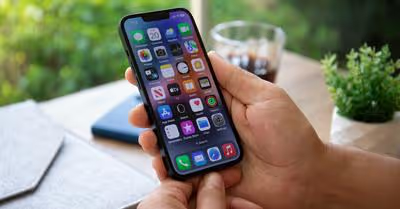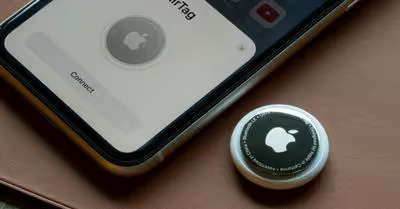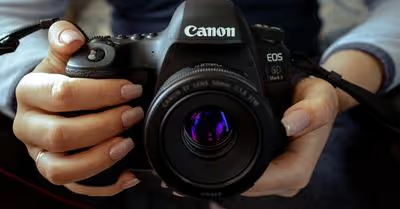Table of Contents
How to Delete Photo Albums on an iPhone
iPhone users can delete photo albums in a few ways. One option is to open the album you want to delete, tap the three dots in the upper-right corner, and then select Delete Album. Another option is to go to the Albums tab, tap Edit in the top-right corner, and then select the album or albums you want to delete before tapping the Delete button.
Finally, iPhone users can also delete photo albums by going to Settings > General > iPhone Storage > Photos, and then selecting the album or albums they want to delete under the Storage section. Deleted photo albums can be recovered by going to Recently Deleted for 30 days. After that time, they are permanently deleted.
Reasons to Delete Photo Albums on an iPhone
One of the best things about having an iPhone is that you can take and store photos whenever and wherever you want. However, after a while, your iPhone's photo album can start to get cluttered, making it difficult to find the photos you're looking for. Furthermore, too many photos can take up valuable storage space on your iPhone.
For these reasons, it's often a good idea to delete photo albums you no longer need. Another benefit of deleting old photo albums is that it can help to declutter your iPhone's home screen. With fewer albums taking up space, you'll be able to see the apps you use more efficiently. So, deleting photo albums is a great place to start if you're looking to free up some space on your iPhone.
How Much Space Does an Album Need?
With the iPhone's increasing popularity and incredible cameras, more and more people are using their devices to take photos and store them digitally. While this can be a convenient way to keep your images safe, it can also quickly eat up storage space on your iPhone. So how much storage space does a photo album need?
Well, it depends on the number of photos you have and the resolution of your images. For example, a single photo taken with an iPhone's 8-megapixel camera can take up around 2 megabytes (MB) of space. So, if you have a 64 GB iPhone, that will allow you to store around 32,000 photos. Of course, you'll also need to factor in the other files and apps stored on your iPhone, as well as any recordings or videos you may have taken.
In general, a good rule of thumb is to estimate that each photo will take up about 2 MB of space. So, if you have a 16 GB iPhone, you should be able to store around 8,000 photos without running out of storage space. If you have a 32 GB iPhone, you should be able to store around 16,000 photos.
Restoring Deleted Photos on an iPhone
It can be frustrating when you accidentally delete a photo album on your iPhone, especially if it's one you've spent a long time putting together. However, there’s no need to worry. There are a few to restore photos and albums you delete. First, check if the album is in your "Recently Deleted" folder.
If it is, you'll be able to restore it from there. If not, you can try connecting your iPhone to a computer and opening the "Photos" app. From there, you should be able to find the album in the "Albums" section, and restoration should be a pretty straightforward process. Lastly, if all else fails, you can always try reaching out to Apple support for help.
Ways to Store Photos on an iPhone
One great thing about iPhone cameras is that they make it easy to take a lot of photos. But what do you do with all of those photos? If you don't want to delete them, you'll need to find a way to store them. Here are a few options:
- iPhone Photo Library: This is the default storage option for iPhone photos. When you take a photo, it's automatically saved to your Photo Library. You can access your Photo Library by opening the Photos app.
- iCloud: iCloud is a cloud-based storage service from Apple. You can use iCloud to store photos, videos, and other files. Once you've set up iCloud, your iPhone will automatically upload new photos to your iCloud account. You can then access those photos from any device that has iCloud enabled.
- Dropbox: Dropbox is a popular cloud-based storage service that you can use to store photos, videos, and other files. Once you've set up Dropbox on your iPhone, you can automatically upload new photos to your Dropbox account. Then, you can access those photos from any device that has Dropbox installed.
Signs Your iPhone Is Out of Storage Space
One of the most frustrating things when using your iPhone is running out of storage space. Not only does it make it difficult to take new photos or download new apps, but it can also lead to your phone running slowly or crashing. Fortunately, there are a few telltale signs that your iPhone is getting full, so you can take steps to free up space before it becomes a major problem.
One of the easiest ways to check your storage levels is to open the Settings app and select "General." From there, you'll be able to see how much storage space is available on your iPhone. If you're getting close to the limit, you may need to delete some old photos or apps you no longer use.
You can also offload some of your data to iCloud or another cloud-based storage service. By staying aware of your iPhone's storage levels, you can avoid the frustration of running out of space.
Deleting photo albums from your iPhone is a quick and easy process. We’ve outlined the steps for you below, so follow along and have those unwanted albums off of your device in no time. If you have difficulty deleting albums on your iPhone, make sure to spend some time with your iPhone. The process is fairly simple. With some trial and error, you will get the hang of it.
Recent Articles

















